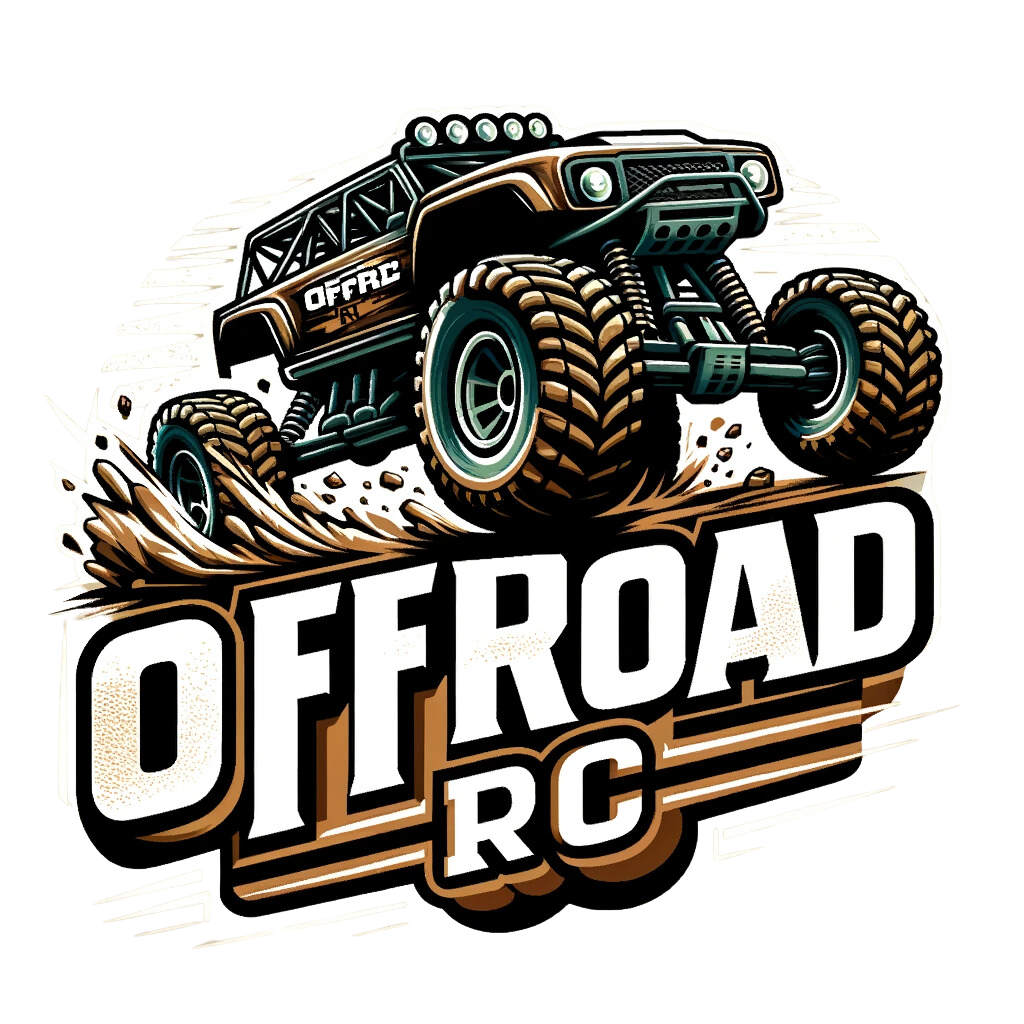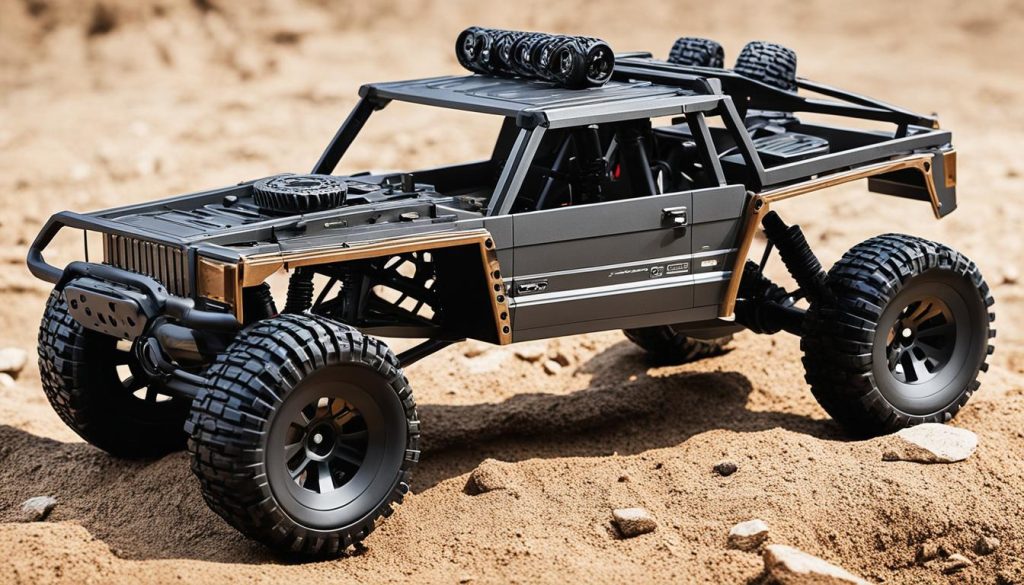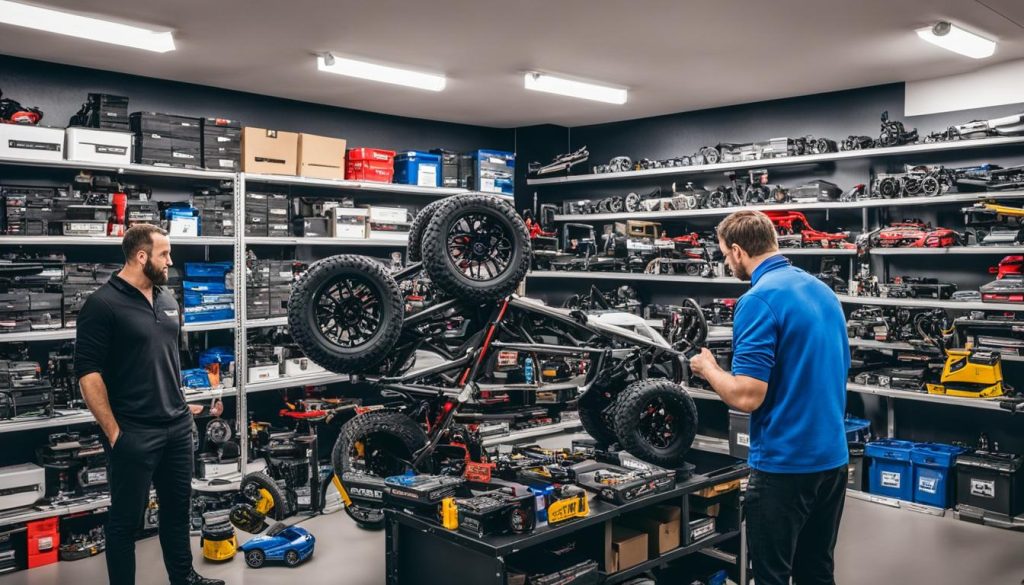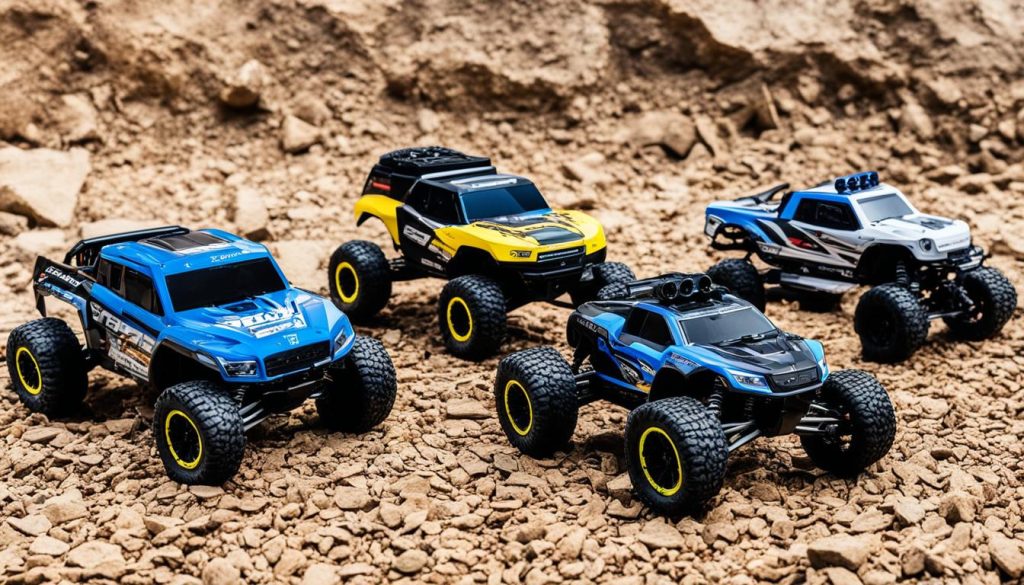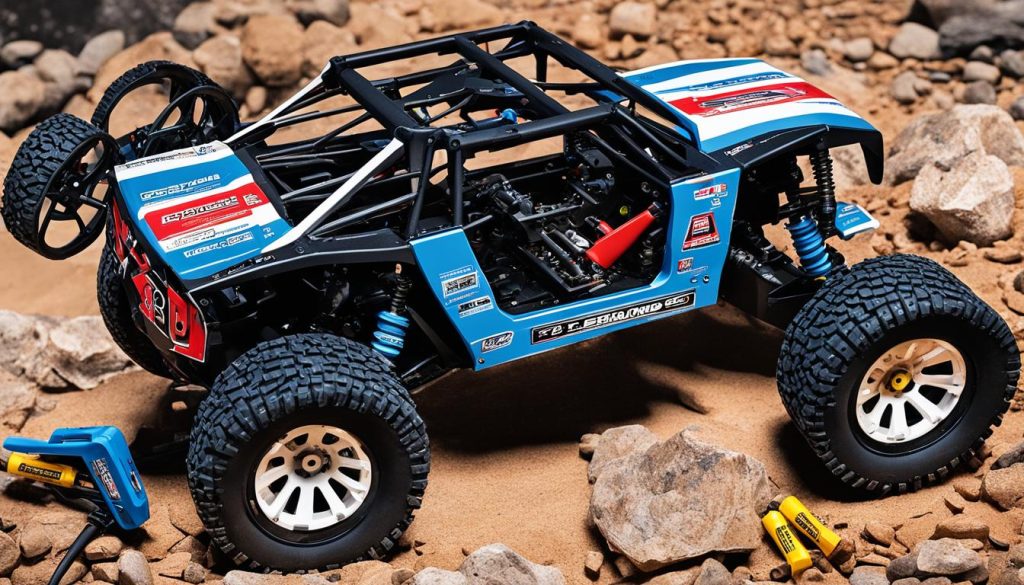Building your own off-road RC car is an exciting and rewarding project that allows you to unleash your creativity and embark on thrilling adventures. Whether you’re a beginner or an experienced enthusiast, this essential guide will walk you through the process of building your own personalized RC car from scratch. From choosing the right parts and accessories to assembling and customizing your car, we’ve got you covered.
To build an off-road RC car, you’ll need a few key components: a sturdy chassis, high-quality tires, a powerful motor, and the necessary accessories. Don’t worry if you’re new to the world of RC cars – we’ll guide you through the entire process and provide you with expert tips along the way. By the end of this guide, you’ll have a unique off-road RC car that’s ready to conquer any terrain.
Key Takeaways:
- Building your own off-road RC car allows you to explore your creativity and have thrilling adventures.
- Choosing the right parts and accessories is crucial for building a personalized RC car.
- Having a sturdy chassis, high-quality tires, and a powerful motor is essential for off-road performance.
- We will guide you through the entire process, from choosing the parts to assembling and customizing your car.
- By the end of this guide, you’ll have a unique off-road RC car ready to conquer any terrain.
Introduction to Building Your Own RC Car
Building your own RC car is a rewarding experience that allows you to unleash your creativity and create a ride that is truly unique. Whether you’re a beginner or an experienced hobbyist, building an RC car is a great way to dive into the exciting world of remote-controlled vehicles. In this section, we will introduce you to the world of RC cars and explain why building your own off-road RC car is a fantastic choice.
RC cars, also known as remote-controlled cars or RC vehicles, are miniature vehicles that are operated using a handheld controller. They come in various types, including on-road and off-road models, allowing you to choose the one that suits your preferences and the terrain you’ll be driving on. Off-road RC cars are designed to tackle rough terrains such as dirt, gravel, and grass, giving you the freedom to explore different environments.
When you build your own RC car, you have the opportunity to customize every aspect, from the chassis and body to the wheels and electronics. This means you can create a car that not only performs well but also reflects your personal style and preferences. Whether you’re a fan of sleek and fast cars or rugged and powerful trucks, building an RC car allows you to bring your vision to life.
As you embark on this journey of building your own RC car, you’ll discover the joy of working with your hands, solving problems, and making something tangible. It’s a hands-on experience that not only provides hours of entertainment but also enhances your technical skills and knowledge of mechanics and electronics.
If you’re new to building RC cars, don’t worry! You don’t need any special skills or expensive tools to get started. With basic tools like screwdrivers and pliers, along with a little patience and enthusiasm, you’ll be ready to tackle your first RC car build. Plus, there are plenty of online resources, communities, and forums where you can find support, tips, and guidance throughout the process.
Building your own off-road RC car is an adventure waiting to happen. You’ll experience the thrill of assembling the components, the satisfaction of seeing your creation come to life, and the excitement of taking it on outdoor expeditions. So, are you ready to dive into the world of RC car building? Let’s get started!
| Benefits of Building Your Own RC Car | Why Choose an Off-Road RC Car |
|---|---|
|
|
Building your own off-road RC car is a rewarding experience that allows you to unleash your creativity and create a ride that is truly unique. In the next section, we will discuss the materials and tools you’ll need to get started on your RC car building journey.
Materials & Tools for Building an RC Car
To build your own off-road RC car, you’ll need a combination of high-quality materials and essential tools. These components are crucial for creating a durable and high-performance vehicle that can withstand the challenging terrains you’ll encounter.
Let’s take a closer look at the materials and tools you’ll need:
RC Car Chassis
The RC car chassis acts as the foundation and structural support for your vehicle. It provides stability and rigidity, ensuring optimal performance on rough terrains. Look for a chassis that is durable yet lightweight to enhance your car’s agility and durability.
RC Car Tires
The right set of RC car tires is essential for maintaining grip and traction, especially on off-road surfaces. Off-road tires typically have deeper treads to provide better traction in challenging terrains. Choose tires that suit your off-road needs, such as all-terrain or mud tires.
RC Car Parts
When building your RC car, you’ll need various components such as wheels and axles, suspension systems, drivetrain components, and steering mechanisms. Selecting high-quality parts ensures durability and seamless integration with the chassis and other system components.
RC Car Accessories
RC car accessories allow you to customize and enhance your vehicle’s performance and appearance. These accessories include body shells, spoilers, lights, and decals. Adding accessories helps personalize your RC car and make it stand out from the rest.
Basic Tools
Having basic tools is crucial for the assembly and maintenance of your RC car. Some essential tools include screwdrivers, wrenches, pliers, and wire cutters. These tools help you tighten screws, adjust components, and perform minor repairs when needed.
Here’s a breakdown of the materials and tools:
| Materials | Tools |
|---|---|
| RC car chassis | Screwdrivers |
| RC car tires | Wrenches |
| RC car parts | Pliers |
| RC car accessories | Wire cutters |
With these materials and tools, you’ll have everything you need to get started on building your own off-road RC car. The next section will guide you through the techniques and skills required for RC car assembly and customization.
Techniques for Building an RC Car
Building an RC car involves a combination of electronics knowledge, mechanical skills, programming, and meticulous attention to detail. To ensure a successful build, you’ll need to understand how different components work together to create a functional vehicle, as well as how to assemble and fine-tune the car for optimal performance. In this section, we will explore the essential techniques and skills required to build your own RC car.
1. Electronics
Having basic electronics knowledge is crucial when building an RC car. You’ll need to understand concepts such as circuitry, wiring, and soldering. Familiarize yourself with the various electronic components used in RC cars, such as motors, speed controllers, receivers, and transmitters. Make sure to follow wiring diagrams and instructions carefully to ensure proper connections.
2. Mechanical Skills
Developing mechanical skills is essential for assembling the mechanical components of your RC car. You’ll need to have a solid understanding of how gears, suspensions, and differentials work. Some common mechanical tasks include installing the chassis, attaching wheels and tires, and adjusting suspension settings. Having proficiency in using basic tools like screwdrivers, pliers, and wrenches is also necessary.
3. Programming
Depending on the complexity of your RC car, programming skills may be required. This is especially true for advanced RC cars that feature additional functionalities like autonomous driving or telemetry. Learning programming languages such as Arduino or C/C++ can help you customize your RC car’s behavior and performance.
4. Attention to Detail
Paying attention to detail is crucial when building an RC car. You should carefully follow the instructions provided with your kit or parts, ensuring proper alignment, proper attachment of components, and secure connections. Check for any loose screws, misaligned parts, or potential issues that could affect the performance or safety of your RC car.
By combining your electronics knowledge, mechanical skills, programming abilities, and attention to detail, you’ll be well-equipped to build your own RC car with confidence and precision.
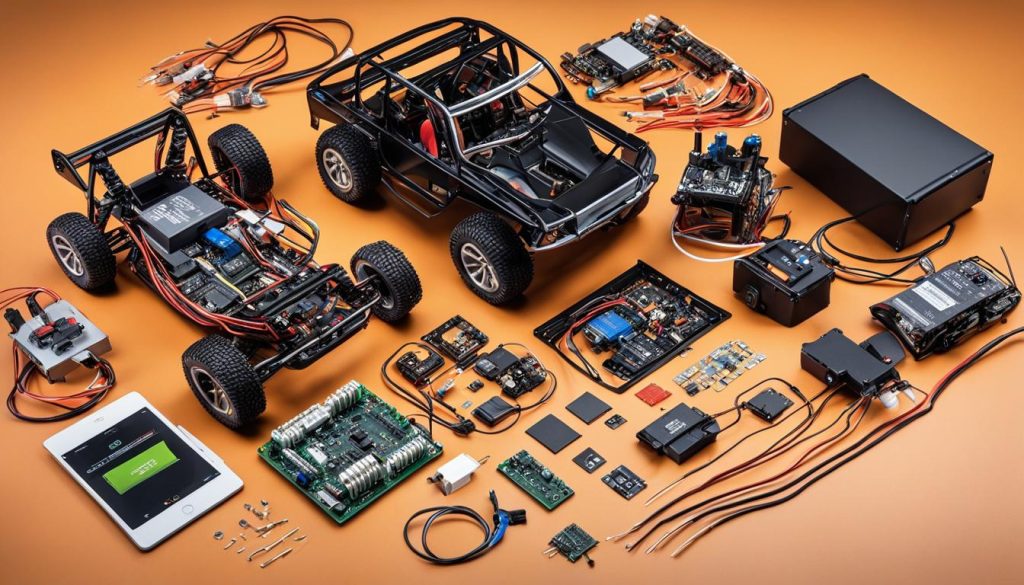
Tips & Tricks for Building the Best RC Car
Building the best RC car requires careful planning, attention to detail, and some insider tips and tricks. In this section, we will share valuable insights to help you create a personalized RC car that exceeds your expectations. From RC car customization to choosing the right parts and ensuring safety, these tips will guide you in building a top-notch RC car.
1. RC Car Customization:
Customizing your RC car is a great way to make it unique and reflect your style. Consider these customization options:
- Painting the body: Choose vibrant colors, apply decals, or create intricate designs to make your RC car stand out.
- Adding accessories: Enhance its appearance and functionality by adding spoilers, LED lights, or functional parts like roof racks and winches.
- Upgrading tires: Opt for off-road tires with deep treads to improve traction and handling on various terrains.
2. Choosing the Right Parts:
The performance and durability of your RC car greatly depend on the parts you choose. Consider the following:
- Quality over price: Invest in high-quality parts that are known for their performance and durability.
- Compatibility: Ensure that the parts you choose are compatible with your RC car model and other components.
- Research: Read reviews and seek advice from experienced RC enthusiasts to make informed decisions.
3. Safety Tips:
Ensuring the safety of yourself and others is essential when building and operating an RC car. Follow these safety tips:
- Protective gear: Wear safety goggles to protect your eyes from debris and use gloves when handling sharp objects.
- Safe building area: Work in a well-ventilated area with good lighting and organize your workspace to avoid accidents.
- Battery precautions: Read and follow the instructions provided by the manufacturer to safely handle and charge RC car batteries.
Remember, building an RC car is not just about the final result but also about the joy of the journey. Take your time, enjoy the process, and don’t hesitate to ask for help or advice when needed. Happy building!
Choosing the Right Brands & Car Types
When it comes to building your own RC car, choosing the right brand is crucial. Each RC car brand offers unique strengths and characteristics that cater to different preferences and performance needs. In this section, we will explore some of the most popular and trusted RC car brands in the market.
TRAXXAS
TRAXXAS is one of the leading RC car brands known for its high-performance vehicles and cutting-edge technology. Their RC cars are known for their speed, durability, and versatility. Whether you’re looking for a street car, drift car, buggy, truggy, or monster truck, TRAXXAS has a wide range of options to choose from.
Exceed
Exceed is another well-known brand among RC car enthusiasts. They offer a diverse lineup of RC cars that cater to both beginners and experienced hobbyists. Exceed RC cars are known for their affordability, reliability, and ease of customization. Whether you’re interested in street racing or off-road adventures, Exceed has a car that suits your needs.
HPI
HPI is a brand that has been synonymous with quality and performance in the RC car industry for years. They are known for their attention to detail, innovative designs, and realistic scale models. HPI offers a wide range of car types, including street cars, drift cars, and off-road vehicles, ensuring there’s something for everyone.
Tamiya
Tamiya is a brand that is highly regarded for its precision engineering and craftsmanship. Their RC cars are known for their attention to detail, durability, and realistic scale appearances. Tamiya offers a wide range of car types, including street cars, drift cars, and off-road vehicles, allowing you to find the perfect car for your needs and preferences.
Team Associated
Team Associated is a well-established brand that is trusted by RC car enthusiasts worldwide. Known for their high-quality materials, precision engineering, and exceptional performance, Team Associated offers a range of car types to suit different styles of driving and racing.
Losi
Losi is a brand that focuses on producing top-of-the-line RC cars for competitive racing. Their vehicles are designed to excel on the track, offering impressive speed, handling, and durability. Losi offers a variety of car types, including street cars, drift cars, buggies, and monster trucks, ensuring there’s a car suitable for your racing aspirations.
Now that you are familiar with some of the prominent RC car brands available, you can make an informed decision based on your preferences and intended usage. Remember to consider factors such as performance, durability, customization options, and budget when choosing your RC car brand.
Next, let’s explore different car types, including street cars, drift cars, buggies, truggies, and monster trucks, so you can determine which type of RC car aligns with your desired driving experience.
Electric or Nitro RC Cars: Pros & Cons
When building an RC car, you have the option of choosing between electric or nitro-powered vehicles. Each type comes with its own advantages and disadvantages, so it’s important to understand the pros and cons before making a decision. In this section, we will examine the key factors that distinguish electric RC cars from nitro RC cars, helping you determine which option is best suited for your needs.
The Pros and Cons of Electric RC Cars
Electric RC cars are powered by rechargeable batteries, making them a popular choice among hobbyists. Here are some pros and cons of electric RC cars:
| Pros | Cons |
|---|---|
| 1. Easy to use and maintain | 1. Limited runtime before battery recharge is required |
| 2. Quieter operation | 2. Less realistic engine sound |
| 3. Lower cost of operation | 3. Less power and speed compared to nitro RC cars |
| 4. Environmentally friendly | 4. Limited customization options |
The Pros and Cons of Nitro RC Cars
Nitro RC cars are fueled by a mixture of nitromethane, methanol, and oil, providing a more realistic and powerful driving experience. Here are some pros and cons of nitro RC cars:
| Pros | Cons |
|---|---|
| 1. Realistic engine sound and smell | 1. More complex maintenance and tuning |
| 2. Higher speed and acceleration | 2. Higher cost of operation due to fuel and maintenance |
| 3. Longer runtime compared to electric RC cars | 3. Louder operation |
| 4. Greater customization options | 4. Requires dedicated space for operation |
Ultimately, the choice between electric and nitro RC cars depends on your personal preferences and the type of driving experience you seek. Electric RC cars offer ease of use, lower cost, and environmental friendliness, while nitro RC cars provide a realistic sound, greater speed, and customization options. Consider these pros and cons carefully to make an informed decision that aligns with your goals and preferences.

Building an Electric RC Car: Motors & ESC
If you’ve decided to build an electric RC car, one of the key decisions you need to make is choosing the right motor and ESC (Electronic Speed Controller) for your build. The motor is responsible for powering the car’s wheels, while the ESC controls the motor’s speed and direction. In this section, we will explore the differences between brushed and brushless motors, explain how the ESC works, and help you select the appropriate motor and ESC for your electric RC car.
Brushed Motors vs. Brushless Motors
When it comes to electric RC cars, you have the option of using either brushed or brushless motors. Each type has its advantages and considerations.
- Brushed Motors: Brushed motors have been used in RC cars for decades and are known for their simplicity and affordability. They consist of a rotor with brushes that make contact with the commutator, creating the necessary magnetic field for motor operation. While brushed motors may not offer the same level of performance as brushless motors, they are a reliable choice for beginners and those on a budget.
- Brushless Motors: Brushless motors, on the other hand, are more advanced and deliver superior performance. They utilize a permanent magnet rotor and an external electronic commutation system, eliminating the need for brushes. This design results in higher efficiency, power output, and overall performance. Brushless motors are perfect for RC enthusiasts who seek speed, power, and precision in their builds.
When deciding between brushed and brushless motors, consider your budget, desired performance level, and experience level. Brushed motors are a cost-effective choice for casual RC car enthusiasts, while brushless motors offer top-of-the-line performance for those seeking high-speed thrills and competitive racing.
Understanding the ESC
The ESC, or Electronic Speed Controller, is a crucial component of an electric RC car. It connects between the motor and the battery, regulating the flow of power to the motor and controlling its speed and direction. The ESC also provides important safety features such as overheat protection and low-voltage cutoff to prevent damage to the motor and battery.
Modern ESCs are programmable, allowing you to fine-tune the acceleration, braking, and other parameters to suit your driving style and track conditions. This level of customization enhances the overall performance and control of your RC car.
Selecting the Right Motor and Battery
Choosing the appropriate motor and battery for your electric RC car depends on several factors. Consider the size and weight of your car, intended use, and your desired performance level.
For smaller or lightweight RC cars, a brushed motor paired with a standard NiMH (Nickel Metal Hydride) battery might be sufficient. However, if you’re aiming for greater speed and power, a brushless motor coupled with a LiPo (Lithium Polymer) battery pack is recommended. LiPo batteries offer higher energy density and can deliver more power compared to NiMH batteries.
It’s crucial to ensure compatibility between the motor, ESC, and battery. Check the specifications provided by the manufacturer to ensure all components can work together effectively.
Remember to always follow safety guidelines when handling LiPo batteries, as they require special care and charging procedures to avoid potential hazards.
Now that you have a better understanding of the motors and ESCs used in electric RC cars, you’re ready to make informed choices for your build. With the right motor and ESC combination, you can unlock the full potential of your electric RC car and experience the thrill of high-performance driving.
Building an RC Car Kit: Advantages & Accessories
Building an RC car from a kit offers several advantages. Not only does it provide a rewarding hands-on experience, but it also allows you to gain a deeper understanding of the vehicle and its components. By assembling the car yourself, you have the opportunity to learn about the intricate mechanics and electronics that power it. This knowledge can be valuable for troubleshooting and maintenance in the future.
Another advantage of building an RC car kit is the ability to customize its look. With a wide range of accessories available, you can personalize your car to suit your style and preferences. From sleek and aerodynamic bodies to unique paint schemes, you have the freedom to create a one-of-a-kind RC car that stands out from the crowd.
When it comes to RC car kits, there are various accessories that you may need to complete your build. Let’s take a look at some of the essential accessories:
Body
The body of an RC car is not only for aesthetics but also plays a crucial role in aerodynamics and protection. You can choose from a variety of body styles, ranging from sleek sports cars to rugged off-road trucks. The body is typically made of lightweight polycarbonate material that is both durable and impact-resistant.
Tires and Wheels
The choice of tires and wheels can greatly affect the performance of your RC car. Off-road tires with aggressive tread patterns provide excellent traction on uneven terrain, while slick tires offer maximum grip on smooth surfaces. Wheels come in different sizes and designs, allowing you to further customize the appearance of your car.
Accessories
In addition to the body, tires, and wheels, there are other accessories you may want to consider for your RC car kit. These include:
- Upgraded suspension parts for improved handling
- LED lights for enhanced visibility during nighttime driving
- Performance motors and speed controllers for increased speed
- Decorative decals and stickers to add a personal touch
- Functional spoilers or wings for improved aerodynamics
By selecting the right accessories, you can fine-tune your RC car to suit your desired performance and style.
| Accessory | Description |
|---|---|
| Upgraded Suspension Parts | Improve handling and stability |
| LED Lights | Enhance visibility during nighttime driving |
| Performance Motors and Speed Controllers | Increase speed and acceleration |
| Decorative Decals and Stickers | Add a personal touch to the car’s appearance |
| Functional Spoilers or Wings | Improve aerodynamics |
Remember, each accessory you add can impact the performance and handling of your RC car, so it’s important to choose wisely based on your desired outcome.
Building an RC car from a kit not only gives you the satisfaction of creating something with your own hands but also allows you to explore and experiment with different accessories to customize your car. Whether you’re a beginner or an experienced hobbyist, a kit provides a convenient and comprehensive way to get started. So, roll up your sleeves, grab a kit, and embark on an exciting journey of building your own RC car!
Required Accessories for RC Car Kits
When building an RC car kit, you will need to gather the necessary accessories for assembly and operation. These accessories ensure that your RC car functions properly and provides an exciting driving experience. Let’s explore the essential components you’ll need to complete your RC car kit:
1. Radio Transmitter and Receiver
To control your RC car remotely, you’ll need a reliable radio transmitter and receiver. The transmitter sends the signals to the receiver, which then translates them into actions for your car. Choose a transmitter and receiver with a suitable range and multiple channels for greater flexibility in controlling your car.
2. Servos
Servos are small devices that move various parts of your RC car, such as the steering mechanism. These essential components ensure precise and responsive control over your car’s movements. Make sure to choose servos that are compatible with your car’s specifications.
3. Motor
The motor is the heart of your RC car, providing the power needed to propel it forward. Depending on your preferences and desired speed, you can choose between brushed or brushless motors. Brushed motors are perfect for beginners, while brushless motors offer higher speeds and increased durability.
4. ESC (Electronic Speed Controller)
The ESC acts as the intermediary between your motor and the power source. It regulates the power flow to the motor, allowing you to control the speed and acceleration of your RC car. Select an ESC that is compatible with your motor and offers features like programmability and thermal protection.
5. Battery
A suitable battery is essential for powering your RC car. Depending on your car’s requirements and your preferences, you can choose between NiMH (Nickel-Metal Hydride) or LiPo (Lithium Polymer) batteries. LiPo batteries offer higher power density and longer run times, but they require additional care and maintenance.
6. Body
The body of your RC car not only adds aesthetics but also helps protect the internal components from damage. Choose a body that suits your preferred style and is compatible with the chassis of your car kit. You can find a wide variety of bodies ranging from realistic replicas to sleek and futuristic designs.
7. Tires and Wheels
Proper tires and wheels are crucial for your RC car’s performance on different terrains. Depending on your desired driving experience, you can choose off-road tires for adventurous off-roading or slick tires for on-road racing. Consider factors like durability, grip, and tread pattern when selecting the tires and wheels for your RC car.
| Accessory | Description |
|---|---|
| Radio Transmitter and Receiver | Allows remote control of the RC car |
| Servos | Controls various parts of the RC car |
| Motor | Provides power for the RC car’s movement |
| ESC (Electronic Speed Controller) | Regulates power flow to the motor |
| Battery | Power source for the RC car |
| Body | Protective shell and aesthetic component |
| Tires and Wheels | Determine the car’s performance on different terrains |
By ensuring that you have all these essential accessories, you’ll be well-prepared to assemble and operate your RC car kit. Before making any purchases, remember to check the compatibility of these components with your specific car kit to achieve the best performance possible.
Tools & Setup for Building an RC Car Kit
Building an RC car kit requires a set of quality tools and a well-organized workspace. To ensure a smooth building process and professional results, it’s important to have the right tools at your disposal. Here are some essential tools that will help you assemble your RC car kit:
Nut Drivers
Nut drivers are essential for tightening or loosening nuts of various sizes. They provide a more secure grip than regular wrenches and allow for quick and efficient assembly. Make sure to have a set of nut drivers with different sizes to accommodate different nuts on your RC car.
Hex Drivers
Hex drivers, also known as Allen wrenches, are used to tighten or loosen socket head screws with hexagonal-shaped heads. These screws are commonly found in RC car kits, and having a set of hex drivers with different sizes will make it easier to work with these screws efficiently.
Curved Lexan Scissors
Curved Lexan scissors are specifically designed for cutting and trimming Lexan bodies, which are commonly used in RC car kits. Their curved blades allow for precise and smooth cuts, ensuring the perfect fit for your RC car body.
Sprue Cutter
A sprue cutter is a specialized tool used to remove parts from the plastic sprues in your RC car kit. It helps you separate the parts cleanly without causing damage or leaving excessive marks. This tool is especially useful when working with plastic components.
Hobby Knife
A hobby knife, also known as a craft knife or precision knife, is an essential tool for fine detail work and trimming. It allows you to make precise cuts and remove any excess material or imperfections from your RC car kit components.
Long Nose Pliers
Long nose pliers are versatile tools that come in handy for various tasks, such as bending wire, gripping small parts, or reaching tight spaces. They are especially useful when working with small electronic components or adjusting intricate parts of your RC car.
Workspace Setup
Creating a well-organized workspace is crucial for an efficient and enjoyable RC car building experience. Here are some important tips to set up your workspace:
- Find a clean and well-lit area where you can work comfortably.
- Organize your tools and keep them within reach to avoid wasting time searching for them.
- Use a designated tray or container to keep small parts organized and prevent them from getting lost.
- Have a stable and sturdy surface to work on, such as a workbench or table.
- Consider using a non-slip mat or padding to protect your workspace and prevent components from rolling off.
By having the right tools and a well-organized workspace, you’ll be well-prepared to tackle your RC car kit assembly with confidence and precision.
Conclusion
Building your own off-road RC car is an exciting and satisfying endeavor that allows you to unleash your creativity while acquiring new skills. Throughout this guide, we have provided you with the essential information, tips, and techniques to successfully build a personalized RC car that reflects your unique style and preferences.
By following the step-by-step process and using high-quality materials and tools, you can create a top-notch RC car that will provide countless hours of fun and excitement. Not only will you have the satisfaction of driving something truly yours, but you will also have the pride of knowing that you built it from scratch.
As you complete your RC car build, take a moment to appreciate your accomplishment and enjoy the thrill of seeing your creation in action. Whether you take it off-road or race it against friends, the satisfaction of building and driving your own RC car is unparalleled. And as you gain more experience and confidence, you can embark on future projects, exploring new designs and pushing the boundaries of RC car building.
FAQ
What parts do I need to build an off-road RC car?
To build an off-road RC car, you will need a durable and lightweight chassis, wheels and axles, an engine, and basic tools like screwdrivers and wrenches.
What skills do I need to build an RC car?
Building an RC car requires a basic understanding of electronics, mechanical skills, and attention to detail.
How can I customize my RC car?
To customize your RC car, you can choose the right parts, such as bodies, tires, and wheels, and apply your own design and style.
What are some popular RC car brands?
Some popular RC car brands include TRAXXAS, Exceed, HPI, Tamiya, Team Associated, and Losi.
Should I choose an electric or nitro-powered RC car?
The choice between an electric or nitro-powered RC car depends on factors like cost, maintenance, power, and performance.
What is the difference between brushed and brushless motors?
Brushed motors are less expensive and easier to maintain, while brushless motors are more powerful and efficient.
What are the advantages of building an RC car kit?
Building an RC car kit allows for a deeper understanding of the vehicle and the ability to customize its look.
What accessories do I need for building an RC car kit?
For building an RC car kit, you will need accessories such as a radio transmitter, receiver, servos, motor, ESC, battery, body, tires, and wheels.
What tools do I need for building an RC car kit?
Some essential tools for building an RC car kit include nut drivers, hex drivers, curved Lexan scissors, sprue cutter, hobby knife, and long nose pliers.
How do I set up my workspace for building an RC car kit?
To set up your workspace for building an RC car kit, make sure you have a well-organized area with enough space to work comfortably.
Is building your own RC car a satisfying experience?
Yes, building your own RC car is a rewarding experience that allows you to unleash your creativity and acquire new skills.
